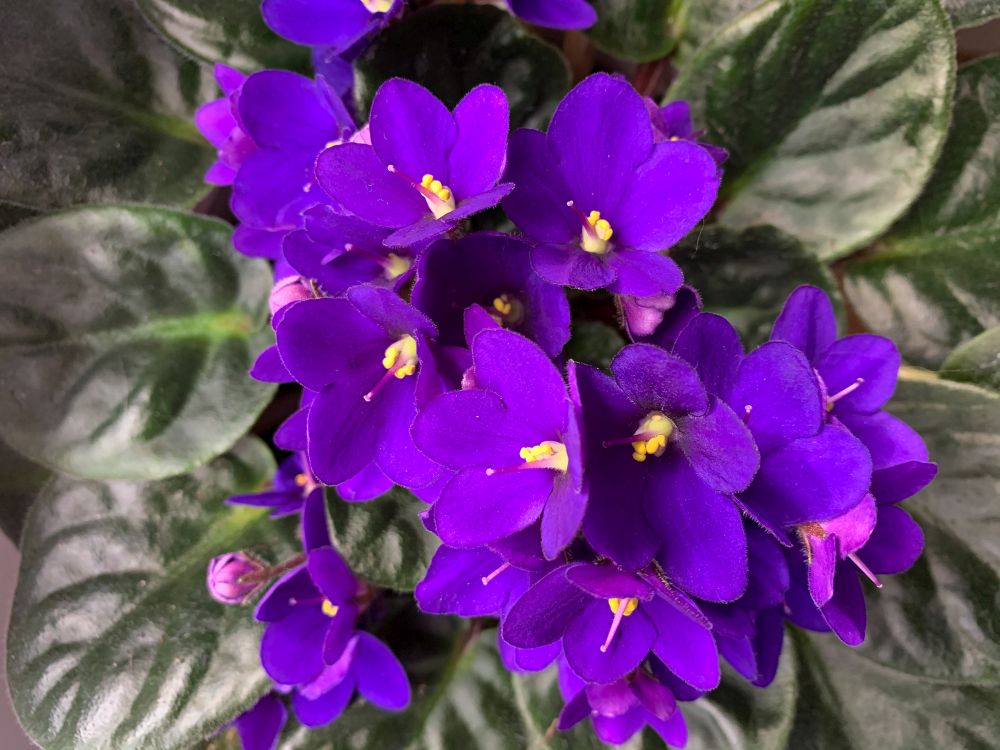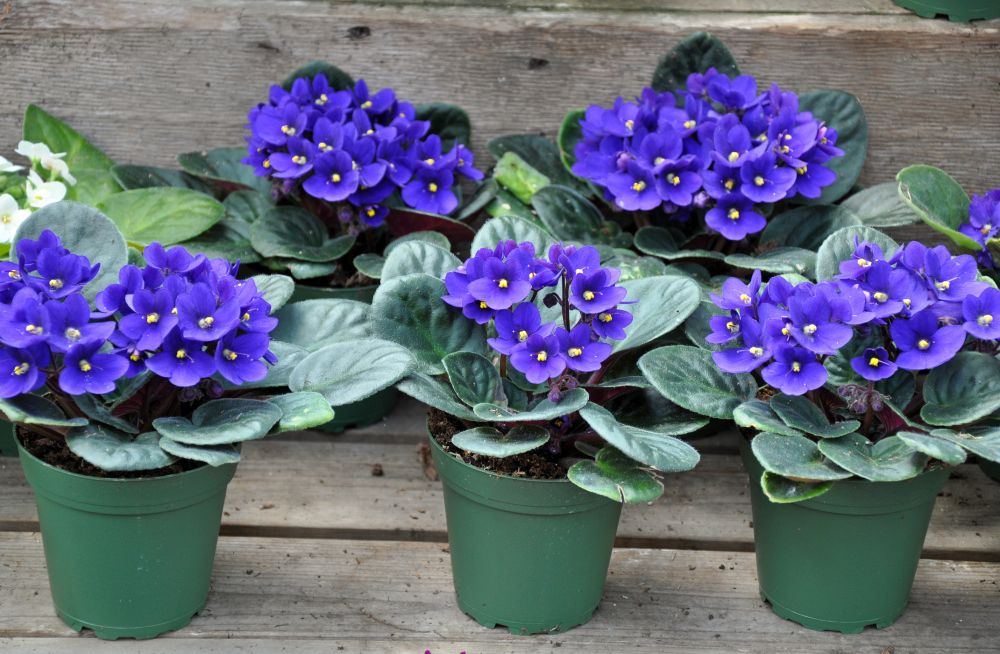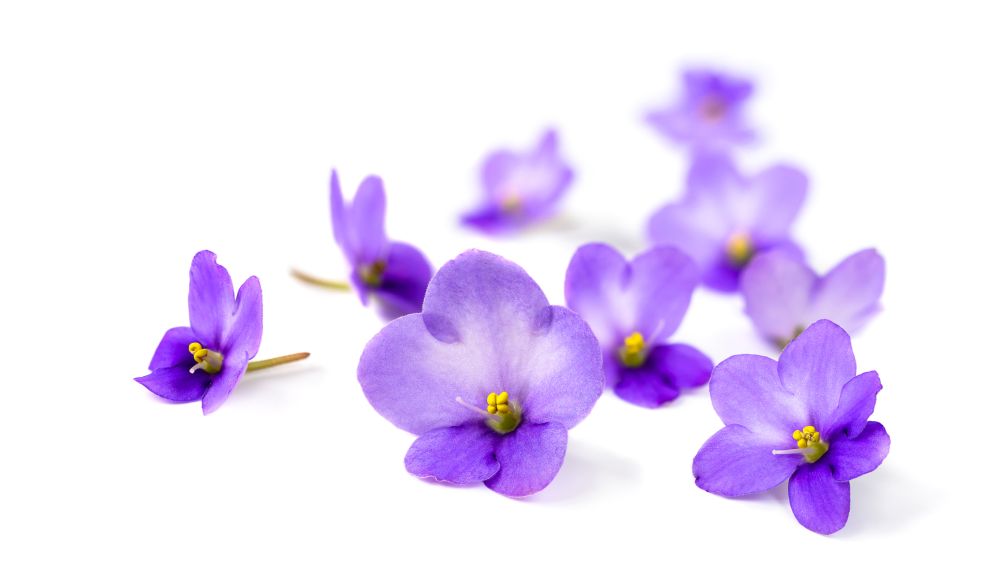African Violets Care – How To Grow And Care For African Violets
The African violets are delightful houseplants whose blooms are the center of any floral arrangement you make. But that doesn’t mean it’s not a finicky plant that is quite particular about the growing conditions you provide for and around it. That prompted some gardeners to call the African violets fusspots.
As we’ll see later, this is a well-deserved reputation. Beginners especially might have trouble getting this houseplant to bloom. Apply the wrong fertilizer dose or type and your plant will sulk and refuse to grow a single flower. Change the light schedule or your watering patterns even slightly and you could get nothing but green leaves all season.
But don’t let that finicky disposition of the African violets intimidate you. This article serves as a comprehensive guide that walks you through the intricate process of growing and caring for these delightful cultivars.
All About the African Violets
The African violets (Saintpaulia) are a group of species and cultivars that have little to do with violets and even less to do with true saintpaulias. Designed specifically to be grown indoors, they make for perfect houseplants especially since they don’t take up much space nor require a special setup.
Natives of Subsaharan Africa, many of these species have lost their natural habitats as a result of urban development. Some are even considered endangered species or near-threatened. But as houseplants, these cultivars continue to blossom and grow in popularity.
The size of the mature plant varies widely depending on the species or cultivar you grow. Some species are quite diminutive reaching no more than 3 inches tall while others could tower above 16 inches. This latter group is considered the giants of saintpaulias. But your houseplant could average between 6 to 10 inches tall and the same in width on a good day.
The leaves of African violets are not without their distinguishing qualities. They can be round or oval in shape and average about 3 inches long and 2 inches wide. The fleshy leaves are covered in fine hairs and are heavily veined. Some cultivars have glossy leaves with prominent bumps across their green surface.
As for the flowers, they take your breath away with their velvety and lobed petals. The flowers grow in clusters with each flower about 1 inch in diameter. Their color varies across a vivid color swatch that includes violet, blue, purple, and sometimes white.
African Violets Varieties
Since African violets is an umbrella term that combines many species and cultivars under it, we will talk about the general classifications here rather than specific species. In general, there are two types of African violets.
Rosette African Violets
As the name implies, this type has one stalk where the leaves grow out of it in a layered pattern. This species belongs to the dwarfish African violets category and they don’t grow more than 6 inches tall. Most of the leaves grow closer to the ground which gives the plant the shape of a rosette. As for the flowers, they mostly grow in the center of the plant surrounded by up to five whorls of leaves. The most popular species and cultivars under this type include Cherry Princess, Crimson Ice, Music Box Dancer, Ness Dynomite, Ness Pixie Grin, and Terese among others.
Trailing African Violets
This type of African violets tends to spread out as more stems grow out of the main stalk. Each stem has leaves growing near the top. The leaves are usually fleshy and too heavy for the stem to carry them. As a result, the side stems tend to arch out and bend toward the ground. This gives the whole plant a cascading shape with the main stalk growing erect in the middle. Flowers bloom at the top of this center stalk. Common hybrids and cultivars include Robs Willawong Trailer, Ramblin Firedance, Pink mint, Senks Neverland Dreams, Noid, Myakka Trail, and others.
How to Grow the African Violets
For a finicky species, African violets are quite easy to propagate and grow. You can either choose the easy way and grow the plant from a leaf or go the hard way and choose seeds. Seeds are a little difficult to germinate let alone getting your hands on some. Since these are mostly cultivars, then the seeds might result in completely different plants than what you imagined. So let’s see how you can start African violets from a single leaf in easy steps.
- Find a healthy plant that has reached maturity and pick a strong leaf growing near the ground.
- Use a sterilized blade to cut the stem of the leaf where it connects with the stalk at a 45-degree angle. The stem should be at least 2 inches long since it will need to be submerged in water.
- Fill a bottle with lukewarm water and drop the leaf in it. The leaf itself should not touch the water, only the stem is under the surface.
- Cover the bottle with a sheet of plastic to keep the water warm and the humidity high around the leaf.
- Place the bottle in a warm place that gets plenty of light without being exposed to direct sunlight.
- As the leaf absorbs the water and more evaporates, you’ll need to replenish the water in the bottle to keep the stem totally submerged.
- After a couple of weeks, roots start to emerge out of the stem. When they’re a couple of inches long, you’re ready to transport the plant.
- Fill a medium terracotta pot with loamy soil or a general-purpose potting mix.
- Dig a small hole in the soil deep enough to accommodate the roots and stem of the plant.
- Take the leaf out of the bottle and place it in the hole immediately. Fill back the hole with soil.
- Water the soil to get it moist and cover the pot with a plastic sheet.
- When small leaves emerge out of the plant, remove the plastic and bring the pot to a sunny spot.
African Violets Care
Now that your African violets houseplant is growing successfully, it’s time to learn how to take care of it and make sure that it has all the nutrients, water, and light it needs and in the right proportions. If everything goes well, it will reward you with ravishing flowers.
Soil
Although you can get away with growing African violets in just about any soil you like including a general-purpose potting mix or even regular garden soil, that’s not the best way to go about it. It’s best if you make your own mix at home and use it whenever you repot the plant. You’ll need leaf mold, peat moss, and sand. Mix them with two parts of soil to create an ideal medium that is well-drained and well-aerated. Some gardeners even opt for the ultra-clean peat-perlite mix to create a soilless medium that doesn’t attract pests and keeps the finicky plants growing successfully.
Light
Light plays a major role in the blooming of African violets. More than any other houseplant, these species need the right amount of light, in the right degree, and at stable rates. First and foremost, the light should come from the sun but it shouldn’t be direct light. So don’t leave the pot sitting on the sill of a south-facing window where the afternoon sun beats on it mercilessly. Instead, opt for dappled or filtered light with the help of a lace curtain. In the summer, move the pot to a window facing the east or north. As long as the plant gets between 6 to 8 hours of sunlight every day, it will happily bloom every season on time like a clock. Keep in mind that too much light is just as damaging to the plant as too little light. While light deprivation leads to darker and thinner leaves, too much light exposure causes the leaves to burn, lose color, or simply die.
Water
After light, inadequate watering is the second most common cause of African violets refusing to bloom. Not just that, but the plants don’t get water in the right amounts on a regular basis, they would wither and die. When you water the plant, pour the water until it flows out of the drainage holes at the bottom of the pot. There will be excess water still floating on top of the soil. Wait for about a half-hour before you tip the pot over to get rid of this excess water. Once you’ve watered the plant, hold off irrigating it again until the top couple of inches of soil go dry. The best way to test the soil is by pressing your finger against the soil in the pot. If the surface depresses easily revealing moist soil underneath, then you don’t need to water it yet. If the soil is relatively hard under your finger, then it’s dry and you should water the plant. Avoid splashing water (especially if it’s cold water) over the leaves since that causes white spots.
Fertilizer
It goes without saying that perennials need fertilizing. They stay around in the soil long enough to extract every last iota of nitrogen, phosphorus, and potassium. So you need to replenish those nutrients along with any other supplements. Experts recommend using liquid fertilizers or those that easily dissolve in water. Use a balanced 20-20-20 fertilizer or any organic compost tea you make at home. If you want to use fertilizer granules insead, make sure the soil is wet before you spread the granules around the stalk of the plant. Apply the fertilizer once every 4 to 6 weeks during the growth and flowering cycles.
Pests and Diseases
Common pests that attack houseplants will also prey on the leaves and flowers of African violets. These include aphids, cyclamen mites, red spiders, and mealy bugs. The best way to get rid of them is to use either neem oil or rub the leaves and stems with a swab soaked in rubbing alcohol.
As for diseases, botrytis blight and crown rot are the common ones. Botrytis blight gives the plants a moldy appearance where the flowers look watery. It’s a result of high humidity levels and poor airflow. Crack a window open and improve ventilation to prevent this disease.
Crown rot can be fatal in severe cases. It’s often the result of using contaminated soil or using unsterilized shears to prune the plant.


